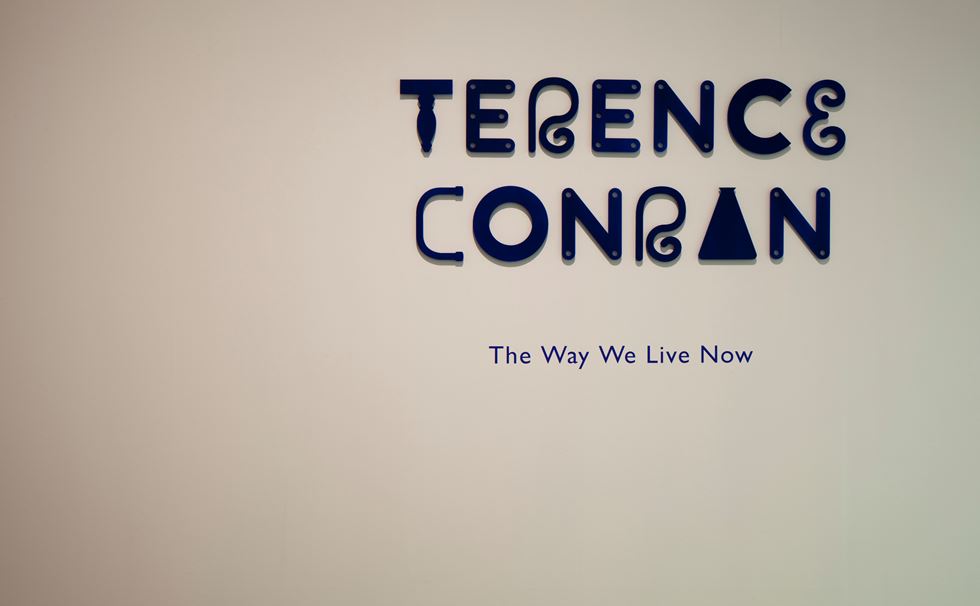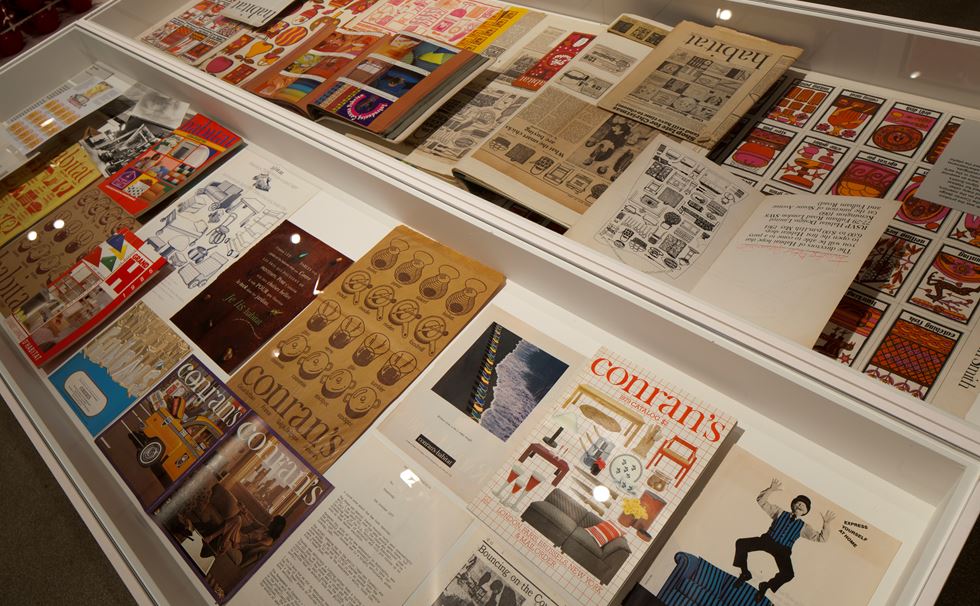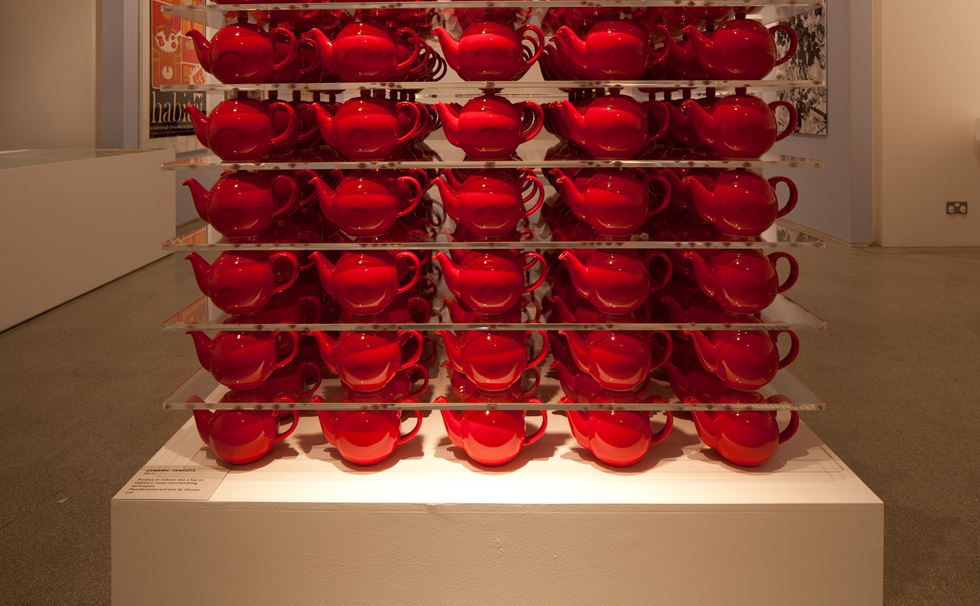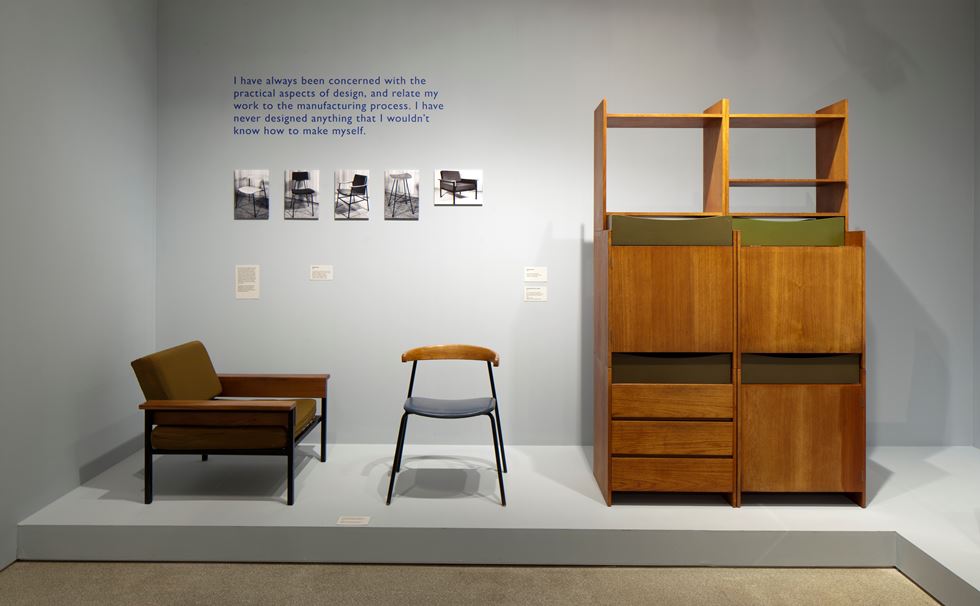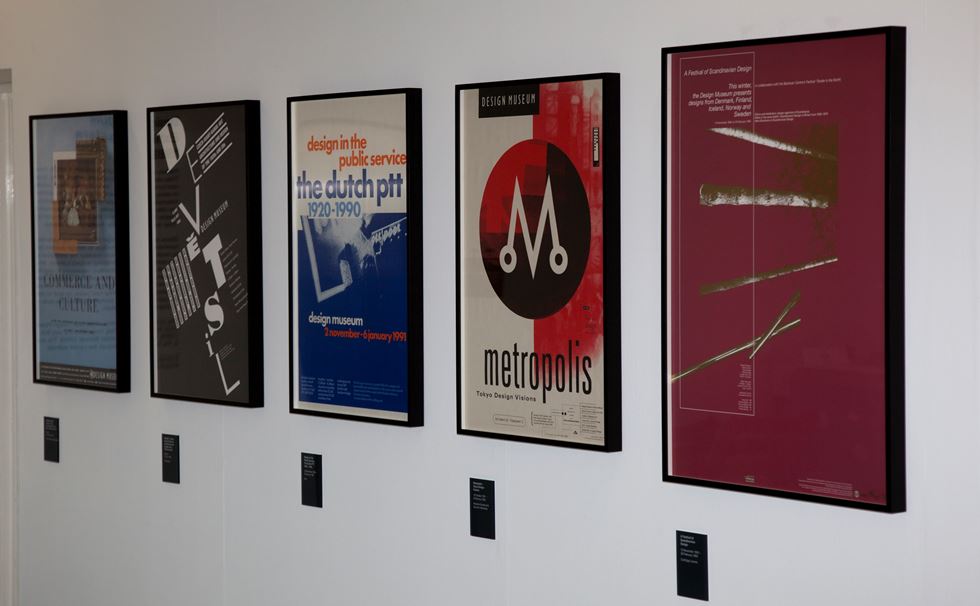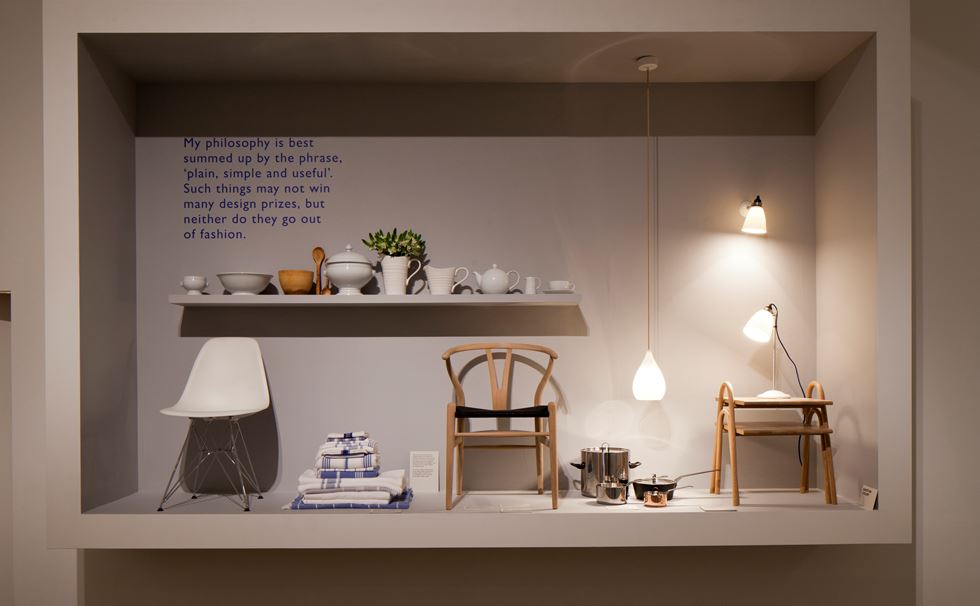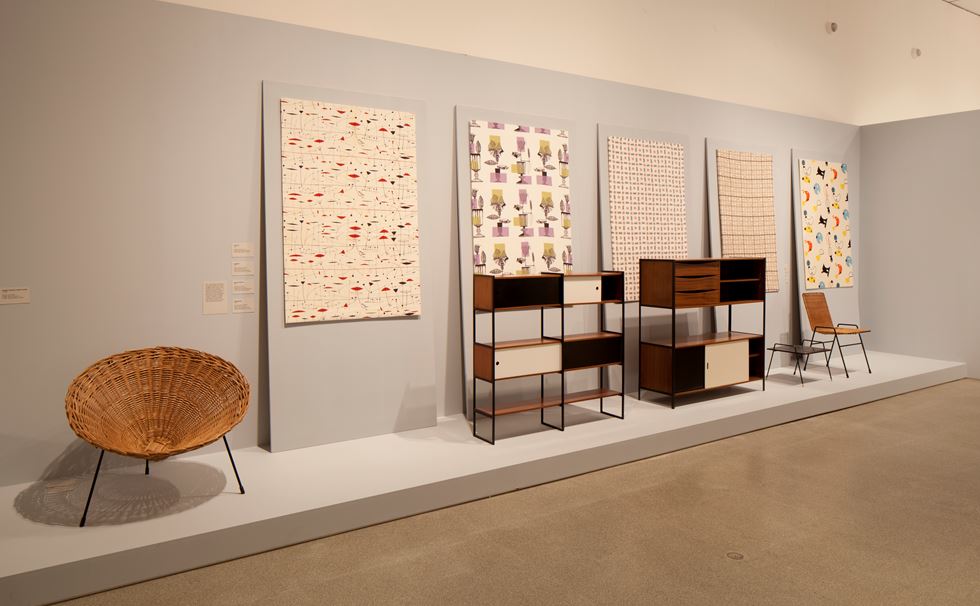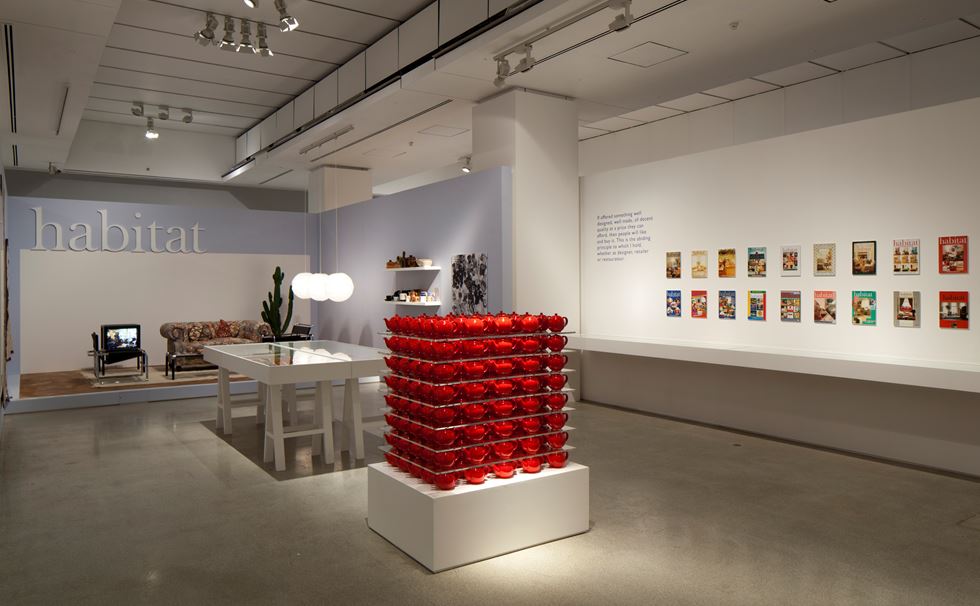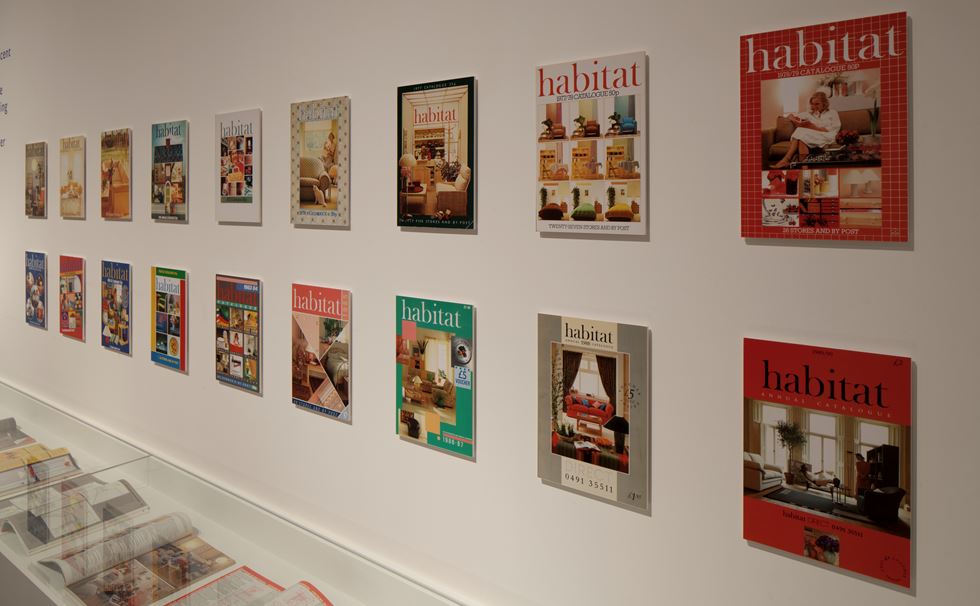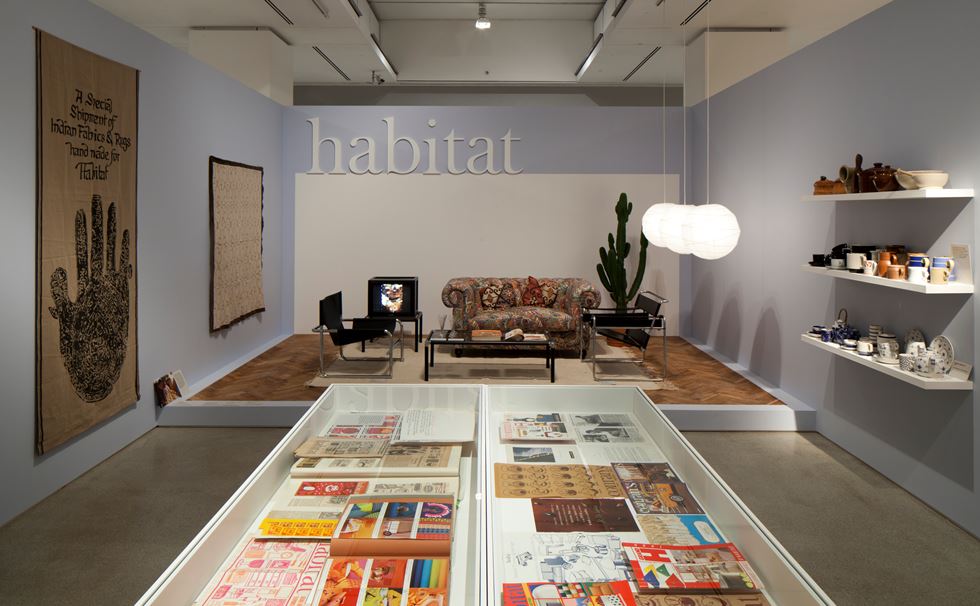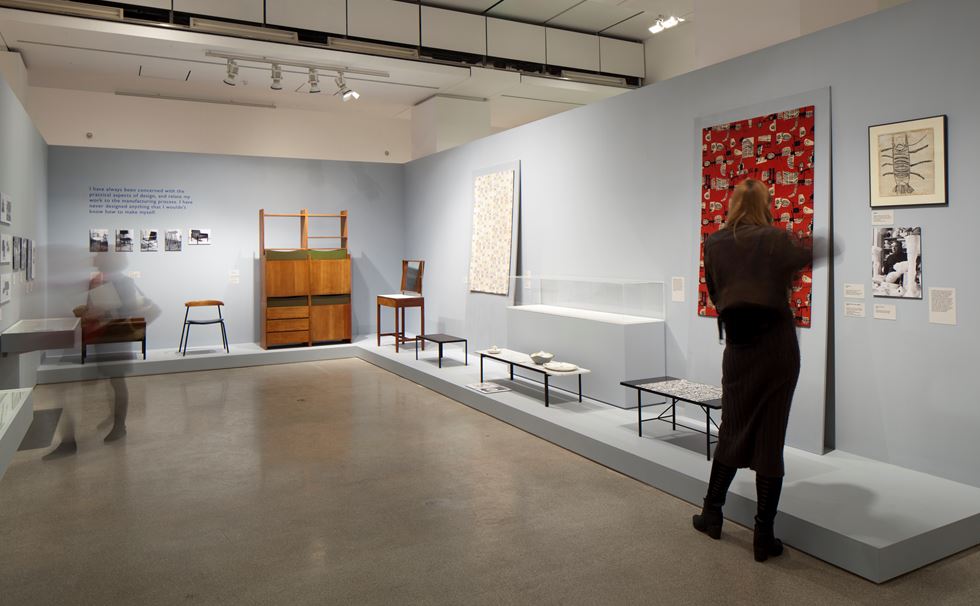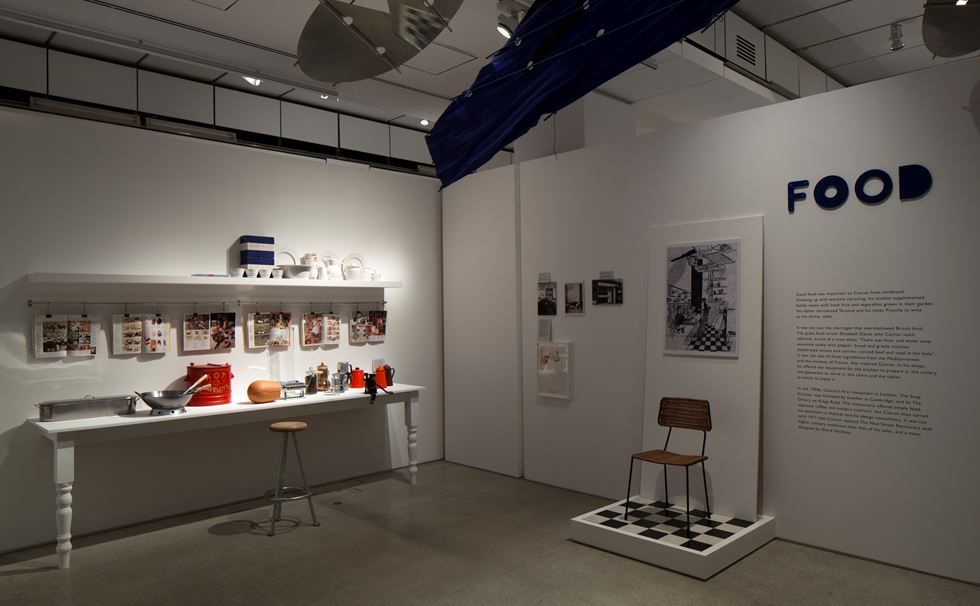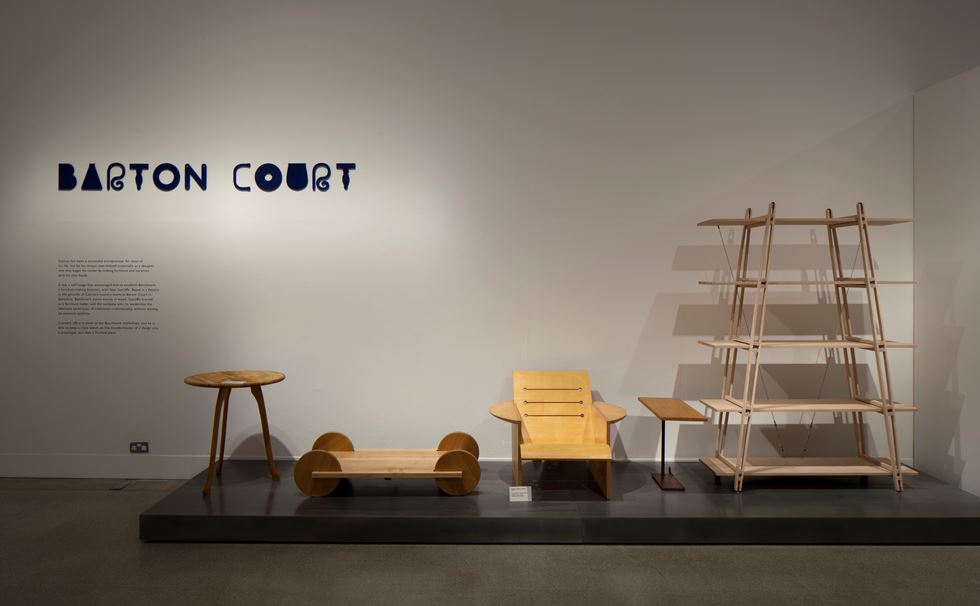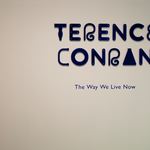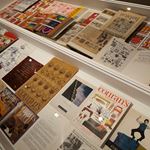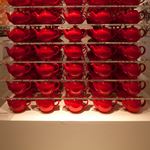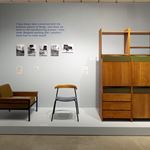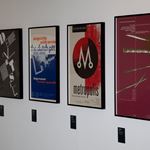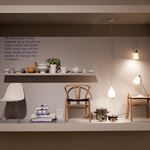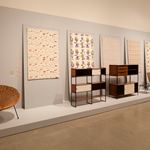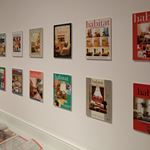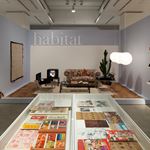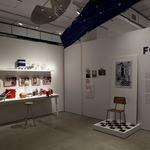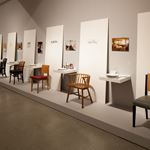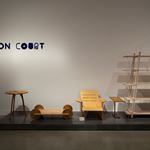Profile
Terence Conran
Sir Terence Conran has had more impact than any other designer of his generation on everyday life in contemporary Britain though a series of parallel careers. Conran describes the private boarding school he attended as an ‘inspired’ choice by his mother, because it particularly encouraged creativity in its pupils and balanced academic study with practical, physical activities like digging the vegetable garden and rudimentary plumbing. Later, at the Central School of Art and Design in London, Conran absorbed the Bauhaus and Arts & Crafts influenced beliefs that ‘a good design should be available to the whole community, not just to a few.’ After Central he set up as an independent designer at the age of 21. Through his friendship with the sculptor Eduardo Paolozzi he was on the fringes of the Independent Group, the artistic avant garde of the 1950s that brought Pop Art to Britain and worked on the Festival of Britain. But he was driven to establish his own shop, as he once said, to prove to people that his designs could find a market even if nobody else wanted to sell them.
He was the founder of Habitat, the furniture company that he grew from a single, very high profile outlet in London, to a national and then international chain. Habitat took Britain out of the gloom of post war austerity into a vision of what the domestic world could be like. It was a very particular version of modernism, based on simple forms, natural materials, and a fresh colour palette. It was a humanised, British version of Bauhaus. Indeed at one time the Conran Design Group used the platonic sphere, cube and cone of the Bauhaus as its logo. But after the post war equation in the British mind of modernism with war time utility designs and deprivation, it was an important commercial success, and showed that design could be glamorous. Habitat sold not only Conran’s own furniture designs, but products sourced from Europe and inspired by ‘triggers’ of traditional domestic utility and continental sensuality: ‘the markets, the roadside cafes, the simple, unpretentious but abundant displays, the delicious food washed down with carafes of rough red wine.’ By offering small, casual purchases alongside large furniture items Conran aimed at ‘that irresistible feeling of plenty you find on market stalls’ and set in motion a revolution in home styling whose effects are still felt. By naming ‘essential’ items and tools for the kitchen and home Conran celebrated the aesthetics of utility and connected the home to the exciting post-war tenor of industry and progress.
Habitat was the springboard for Conran’s expansion into the retail mainstream. As the founder of the Storehouse Group he acquired the Heals furniture business, set up Next, the high street fashion chain, and ran British Home Stores and Mothercare. This business ambition came to an end after several years of management and shareholder acrimony but the dream of introducing intelligently-designed products to the mass market had a brief, palpable effect on the high street. Terence continues to be involved in retail with The Conran Shop, with eight stores located in London, Paris, New York and across Japan.
At the same time the Conran design consultancy was in the vanguard of the professionalisation of design in Britain, specialising in interiors, product design and graphics, and even establishing an architectural practice with Fred Lloyd Roche. Conran then embarked on an entirely new career in the restaurant business, with an impact as profound on what Britain’s ever-expanding middle classes ate, as Habitat had on what they sat on and the utensils they used. His first restaurant, with Ivan Storey, The Soup Kitchen, opened in London in 1953 and his most recent, Skylon, opened at the Royal Festival Hall in London in 2007; and the restaurant empire extends to Guastavino’s in New York, Custom House in Copenhagen and Botanic in Tokyo. Alcazar, which opened in Paris in 1998, represents a resolution of Conran’s admiration and passion for French food and style. In 2006, D&D London acquired a 49% stake in the restaurant business, but Conran continues to be involved with it. In late 2008 he opened the Boundary in Shoreditch – a restaurant, rooftop bar and grill, café, bakery and foodstore with 17 individually designed bedrooms.
Conran showed how design could become an organised businesslike activity, and one that could earn its place at the centre of national debate. He broke the mold of the ‘paternalistic, elitist’ character of British design before and after the War, and was reproached by the Society of Industrial Artists in the mid-1950s for promotional activities which were regarded as unacceptably competitive. The success of his enterprises have hugely influenced the British government’s ability to recognise the economic value of design.
In spite of the international flush of Modernism after the War, Conran calculates that ‘it has taken a good half-century for Britain to begin to accept modernity.’ Fuelled by his own passion for the modern movement and its benefit to society, Conran was instrumental in establishing the Design Museum in London. With the advice of Sir Paul Reilly, the long serving director of the Council of Industrial Design, he negotiated an agreement with the Victoria and Albert Museum to establish the Boilerhouse project in the museum’s basement in 1982. Under its inaugural Director, Stephen Bayley, the Boilerhouse put design on the cultural landscape in Britain in a way that it had not been for many years. When the Boilerhouse outgrew the V&A’s basement, it was Conran’s support that permitted its metamorphosis into the Design Museum in its Shad Thames site.

